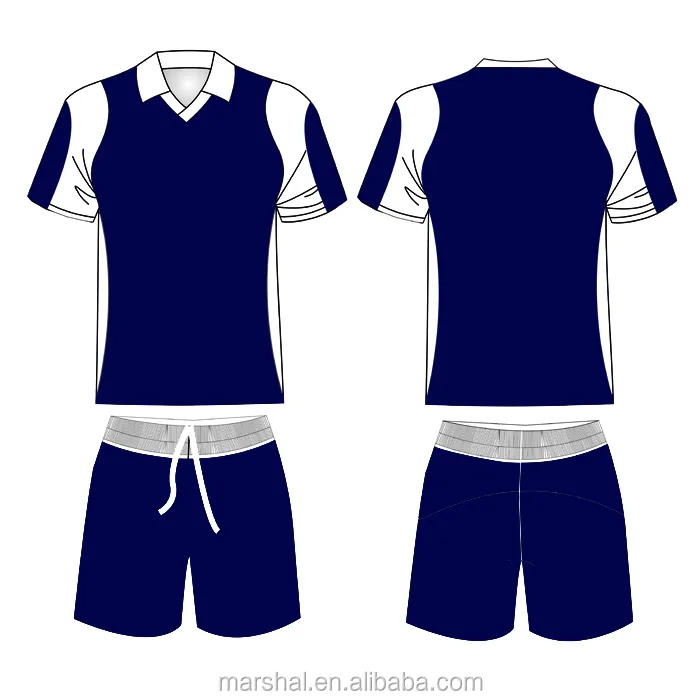In association football (also know as football or soccer), just like some other sport games, kit refers to the normal equipment and attire worn by players. The “cheap football kits” is different from a “strip” (called “uniform” in North American English), which include the shirt, shorts and socks, although people sometimes use the terms interchangeably. The sport’s Laws of the Game stipulate the minimum kit which a player must use, and also forbid using things that are parlous to every players. Some games may set further restrictions, such as the maximum size of logos displayed on the shirt and stating, and when a match between teams with similar colors, the away team should change to other kit coloured differently.
Generally,soccer players wear kits with specific numbers on the shirts. Originally the numbers wore by the players of a team are from 1 to 11, corresponding roughly to their positions on the ground, but at the professional level it has been generally superseded by squad numbering, so each player in a team is allocated a specific number that can’t be changed in a season. Commonly,professional teams also display players’ last names or nicknames on their shirts, above their squad numbers,some times blow.
Soccer kit has improved much since the early period of the soccer, when players usually wore thick cotton shirts, knickerbockers and heavy hard leather football boots. In the 20th century,the boots became lighter and softer, shorts designed into shorter style, and the more advanced clothing manufacture and printing allowed soccer jerseys to be made in lighter synthetic fibres with increasingly colorful and diverse designs. With the rising advertising in the twentieth century, logos of the sponsors start appearing on shirts, and replica cheap soccer jerseys were made available for fans to purchase, helping clubs earn large amount of revenue.
In association football (also know as football or soccer), just like some other sport games, kit refers to the normal equipment and attire worn by players. The “kit” is different from a “strip” (called “uniform” in North American English), which include the shirt, shorts and socks, although people sometimes use the terms interchangeably. The sport’s Laws of the Game stipulate the minimum kit which a player must use, and also forbid using things that are parlous to every players. Some games may set further restrictions, such as the maximum size of logos displayed on the shirt and stating, and when a match between teams with similar colors, the away team should change to other kit coloured differently.
Generally,soccer players wear kits with specific numbers on the shirts. Originally the numbers wore by the players of a team are from 1 to 11, corresponding roughly to their positions on the ground, but at the professional level it has been generally superseded by squad numbering, so each player in a team is allocated a specific number that can’t be changed in a season. Commonly,professional teams also display players’ last names or nicknames on their shirts, above their squad numbers,some times blow.
Soccer kit has improved much since the early period of the soccer, when players usually wore thick cotton shirts, knickerbockers and heavy hard leather football boots. In the 20th century,the boots became lighter and softer, shorts designed into shorter style, and the more advanced clothing manufacture and printing allowed soccer jerseys to be made in lighter synthetic fibres with increasingly colorful and diverse designs. With the rising advertising in the twentieth century, logos of the sponsors start appearing on shirts, and replica cheap soccer jerseys were made available for fans to purchase, helping clubs earn large amount of revenue.

